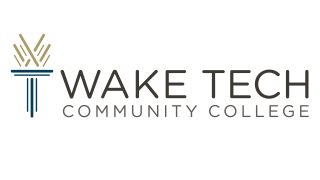This course is designed for teaching faculty in biomanufacturing operations. It provides an overview of good manufacturing practices and describes the elements of a well-designed pharmaceutical facility. Theory and practice are covered for upstream, downstream, and finishing operations providing an overview of processing from start to finish. Adult learning best practices and teaching points are presented throughout the course.
Biomanufacturing faculty teaching for the community college system
- Introduction
- GMP overview and Data Integrity
- Making Proteins and Biomanufacturing
- Working in a pharmaceutical facility
- Upstream Manufacturing
- Downstream Manufacturing
- Formulation and Finishing operations
- Best practices for adult learning
- Lab Activities
Instructors who have completed this course should be able to:
- Explain the uniqueness of our industry and culture in terms entering students can understand.
- Define basic CGMP principles and explain how they will incorporate into all lectures and activities. Make it both a mindset and a thread throughout.
- Define ALCOA and be able to recognize documentation errors and write effective explanations for changes.
- Define good cleanroom habits and how to properly gown.
- Explain where types of contamination, where it comes from and how it is controlled in the process.
- Explain basic protein chemistry, denaturation and why A280 is used for identifying total protein.
- Identify basic manufacturing flow for biomanufacturing process. Be able to explain the difference between mammalian and bacterial processes.
- Identify key manufacturing equipment and demonstrate knowledge of diaphragm valve and use of sanitary fittings.
- Identify key process sensors and explain what a DCS system does.
- Define purpose of the upstream process, identify key operations and explain purpose. Explain differences between a fermenter and bioreactor. Perform an activity to grow bacteria cells with a flask culture, measure growth and record on graph.
- Define purpose of the downstream process, identify and state what each operation does and how it works. Perform a chromatography run using GFP, measure and record results on a graph.
- Explain the importance of formulation, final packaging, and labeling. Explain differences in aseptic and terminal sterilization processes.
- Incorporate best practices of teaching biotechnology into their own courses. Be able to write effective course objectives.
Delivered in-person in a classroom or lab setting.
This course is designed for teaching faculty in biomanufacturing operations. It provides an overview of good manufacturing practices and describes the elements of a well-designed pharmaceutical facility. Theory and practice are covered for upstream, downstream, and finishing operations providing an overview of processing from start to finish. Adult learning best practices and teaching points are presented throughout the course.
Biomanufacturing faculty teaching for the community college system
- Introduction
- GMP overview and Data Integrity
- Making Proteins and Biomanufacturing
- Working in a pharmaceutical facility
- Upstream Manufacturing
- Downstream Manufacturing
- Formulation and Finishing operations
- Best practices for adult learning
- Lab Activities
Instructors who have completed this course should be able to:
- Explain the uniqueness of our industry and culture in terms entering students can understand.
- Define basic CGMP principles and explain how they will incorporate into all lectures and activities. Make it both a mindset and a thread throughout.
- Define ALCOA and be able to recognize documentation errors and write effective explanations for changes.
- Define good cleanroom habits and how to properly gown.
- Explain where types of contamination, where it comes from and how it is controlled in the process.
- Explain basic protein chemistry, denaturation and why A280 is used for identifying total protein.
- Identify basic manufacturing flow for biomanufacturing process. Be able to explain the difference between mammalian and bacterial processes.
- Identify key manufacturing equipment and demonstrate knowledge of diaphragm valve and use of sanitary fittings.
- Identify key process sensors and explain what a DCS system does.
- Define purpose of the upstream process, identify key operations and explain purpose. Explain differences between a fermenter and bioreactor. Perform an activity to grow bacteria cells with a flask culture, measure growth and record on graph.
- Define purpose of the downstream process, identify and state what each operation does and how it works. Perform a chromatography run using GFP, measure and record results on a graph.
- Explain the importance of formulation, final packaging, and labeling. Explain differences in aseptic and terminal sterilization processes.
- Incorporate best practices of teaching biotechnology into their own courses. Be able to write effective course objectives.


